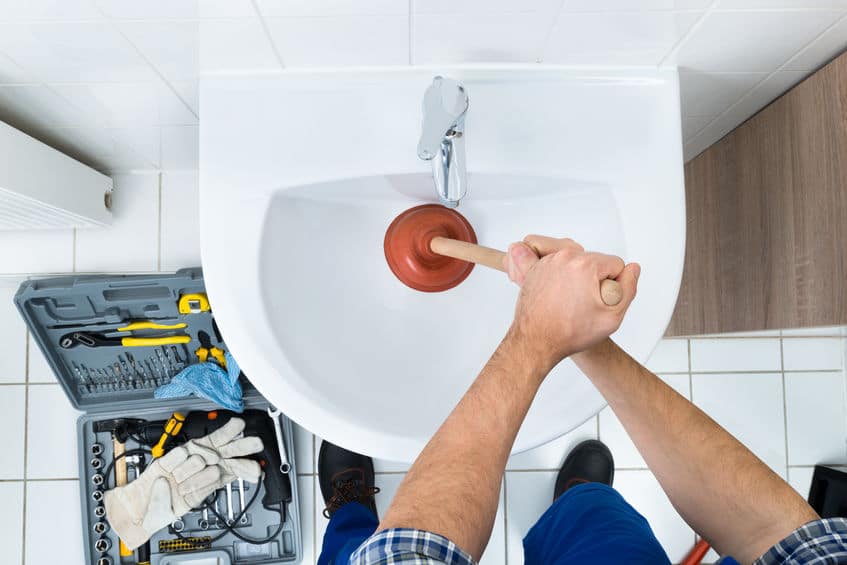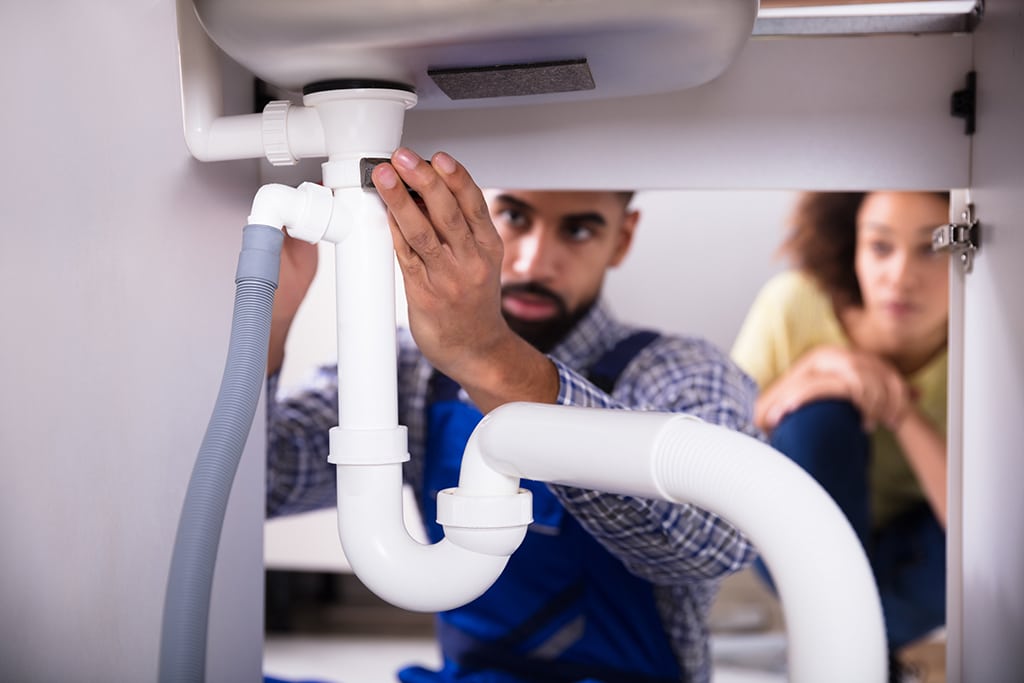Actions to Implement for Fixing a Blocked Drain Before Contacting Plumbing Experts
Actions to Implement for Fixing a Blocked Drain Before Contacting Plumbing Experts
Blog Article
What're your thoughts and feelings on 8 Tips For Clearing A Blocked Drain?

Intro
Managing an obstructed drainpipe can be a frustrating experience, interrupting day-to-day tasks and possibly triggering damages to your building. Nonetheless, prior to connecting to pipes specialists, there are actions you can take to address the concern on your own. In this guide, we'll check out do it yourself solutions and preventive measures to deal with a blocked drainpipe effectively.
Identifying the Problem
The very first step in dealing with a blocked drain is recognizing the signs. Slow-moving drain, gurgling noises, foul odors emanating from drains pipes, or water backing up are common indications of a blocked drain. Recognizing these signs early can aid avoid further complications.
Usual Reasons For Obstructed Drains
Comprehending the aspects that contribute to drain pipes blockages is necessary for efficient resolution. Typical offenders consist of hair, soap residue, grease, food debris, and international objects like sanitary items or paper towels. Tree origins getting into below ground pipes can additionally trigger significant blockages.
DIY Solutions
For minor clogs, numerous do it yourself options can be effective. Pouring boiling thin down the drainpipe can aid liquify oil and debris. Sodium bicarbonate and vinegar or a mix of salt and cooking soft drink can work as all-natural cleaners. Utilizing a bettor or plumbing snake to remove obstructions is another choice.
Tools and Devices
Having the right devices on hand can make DIY drain cleansing much more reliable. A plunger is a flexible tool for clearing blockages in sinks, bathrooms, and showers. A plumbing snake or auger can get to deeper obstructions, while drain cleaning chemicals can be made use of very carefully for persistent obstructions.
Safety nets
To prevent future blockages, embracing preventive measures is crucial. Mount drain guards or filters to catch hair and particles prior to they go into the pipelines. Frequently flush drains pipes with warm water to dissolve oil accumulation, and prevent throwing away oil or strong waste down the drain.
When to Call a Specialist
While DIY services can fix small obstructions, particular indicators show the requirement for expert assistance. Consistent obstructions, foul odors in spite of cleansing initiatives, or numerous drains pipes backing up at the same time are warnings that necessitate experienced intervention.
Picking the Right Pipes Service
When selecting a plumbing solution, think about elements such as experience, licensing, and consumer reviews. Choose a respectable plumbing professional with a record of top quality workmanship and transparent prices practices.
Price Considerations
The price of expert drain cleaning services can differ depending on the intensity of the obstruction and the plumbing technician's rates. Demand quotes from several providers and ask about any kind of service charges to make sure openness and prevent shocks.
Safety Precautions
When attempting do it yourself drainpipe cleansing, focus on safety. Put on protective gloves and glasses to avoid contact with damaging chemicals or bacteria. Never ever blend various drain cleaning products, as this can create harmful fumes.
Situation Researches
Real-life examples illustrate the effectiveness of DIY remedies and the significance of timely expert intervention in fixing drainpipe obstructions.
Verdict
By adhering to the tips detailed in this guide, you can efficiently tackle obstructed drains and avoid future plumbing issues. Whether selecting DIY remedies or seeking expert aid, prompt activity is essential to preserving a healthy plumbing system and maintaining the integrity of your home.
How to Clear a Clogged Drain Yourself (And When to Call In the Professionals)
What Can Clog a Drain
Dirt Skin flakes Hair Grease Soap scum Food Offset pipes Tree roots Small objects Mineral buildup DIY Tricks to Unclog a Drain
You can fix this! Once you have identified the source of the clog (or have a vague idea), you can try one or a combination of these fixes in order to clear your plumbing.
Wire Hanger or Snake
Untangle and clear out hair from a drainpipe with a homemade snake. Use a straightened-out wire hanger with a 90-degree angle hook to locate the clog and drag out any unwanted material.
Remember not to push the clog further down to where the wire hanger cannot reach! If you need to follow up with a plunger, give it a try. Your efforts might be more successful after it’s been wire-snaked.
If you want to get fancy and don’t have a wire hanger to spare, head to the store and pick up a hand-operated drain snake. You can get one for $10-$30. It may save you the hassle, and provide additional length to reach deep into the clogged pipe.
Plunger
A cup plunger has a suction cup attached to a wooden handle. The rubber creates a seal around the drain, and increases the pressure force of the plunger.
Plunge for 30-second increments to loosen the clog. This may need to be repeated over the course of 15-20 minutes. Once plunged, run the water to flush the remaining material out of the drain.
Remember– never use a plunger if you have used a chemical drain cleaner. These chemicals can splash up from the force of the plunger and cause serious injury or burns.
Boiling Water
Hot water can sometimes break up materials into a flushable amount. Dirt, grease, and soap buildup requires heat in order to unstick from surfaces.
Take your kitchen kettle and heat your water to a boil. Once it reaches a rolling boil, pour it directly down the drain into the blockage. Carefully follow with plunging, if necessary.
Don’t worry if this takes more than one try! It can often take multiple kettles and repeated plunging in order to clear a particularly stubborn clog.
Chemical Drain Cleaner
As a last resort, pick up a bottle of chemical drain cleaner. Drain-cleaning chemicals are potent, and not very good for the environment.
You may need to wear protective eyewear in gloves before handling your bottle of chemical drain cleaner. Follow the instructions printed on the bottle, and flush with water as soon as the instructions allow. Do not follow with plunging.
Baking Soda and Vinegar
As a safer alternative to chemical drain cleaner, baking soda and vinegar can create a chemical reaction that clears tough clogs.
Combine one cup of cleaning vinegar with one cup of boiling water, and set aside. Once you have done this, pour half a cup of baking soda down the drain. Give the baking thirty seconds to settle and cover a large portion of the problem drain.
Following the baking soda, pour down your vinegar and hot water solution. Once the vinegar and baking soda combine, the mixture will bubble and fix. Let this reaction fizzle in the drain for about an hour.
After an hour, follow with a kettle’s worth of hot water. The heat and liquid should flush out any remaining material.
When to Call a Plumber
If your DIY attempts haven’t cleared your clog drain, it’s time to call in a professional. It’s not worth losing access to your kitchen sink or high-traffic bathroom. A clog in a vital area can keep you from the things you’d rather be doing, and derail your routine.
Anytime a clog is causing water to spread is a time to call in a plumbing service. What starts out as a little bit of water can quickly grow into serious, expensive water damage.
Additionally, a serious clog can result in burst pipes or serious leaks. Make sure you know when to take it seriously!
https://myguysnow.com/how-to-clear-a-clogged-drain-yourself-and-when-to-call-in-the-professionals/

I came across that article about Tips for Dealing with Clogged Drains and Sewer Lines when surfing the search engines. Liked our blog? Please share it. Let other people find it. Thank you for your time invested reading it.
Get Started Report this page